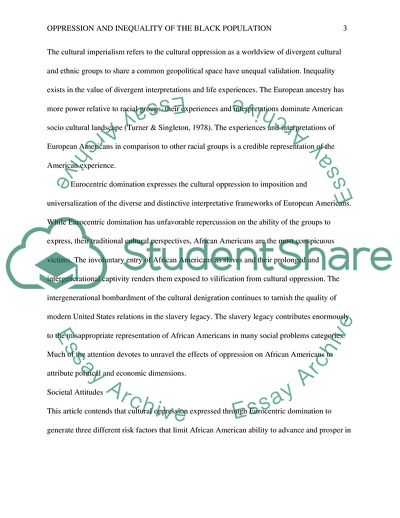Cite this document
(Oppression and Inequality of the Black Population Essay Example | Topics and Well Written Essays - 1500 words, n.d.)
Oppression and Inequality of the Black Population Essay Example | Topics and Well Written Essays - 1500 words. https://studentshare.org/sociology/1851372-oppression-and-inequality-of-the-black-population
Oppression and Inequality of the Black Population Essay Example | Topics and Well Written Essays - 1500 words. https://studentshare.org/sociology/1851372-oppression-and-inequality-of-the-black-population
(Oppression and Inequality of the Black Population Essay Example | Topics and Well Written Essays - 1500 Words)
Oppression and Inequality of the Black Population Essay Example | Topics and Well Written Essays - 1500 Words. https://studentshare.org/sociology/1851372-oppression-and-inequality-of-the-black-population.
Oppression and Inequality of the Black Population Essay Example | Topics and Well Written Essays - 1500 Words. https://studentshare.org/sociology/1851372-oppression-and-inequality-of-the-black-population.
“Oppression and Inequality of the Black Population Essay Example | Topics and Well Written Essays - 1500 Words”. https://studentshare.org/sociology/1851372-oppression-and-inequality-of-the-black-population.


